Kawasaki Versys 650 vs Triumph Tiger Sport 660 comparison
The Kawasaki Versys 650 is a proven road touring machine, but its supremacy is challenged by the impressive Tiger Sport 660
Published on Oct 24, 2022 07:00:00 AM
45,912 Views
Follow us on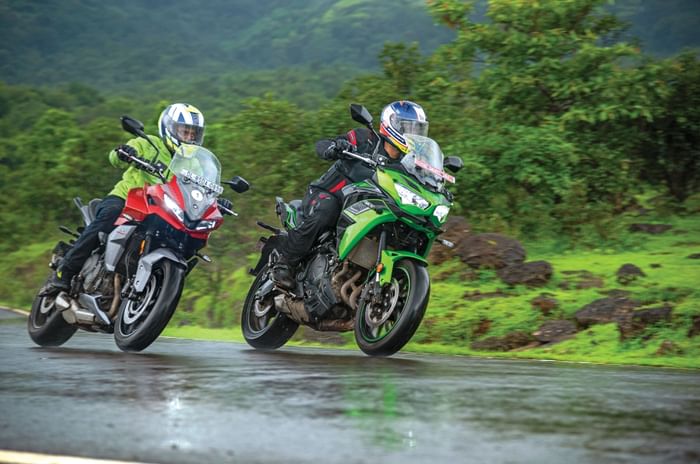

Triumph’s engine is more tractable and sporty
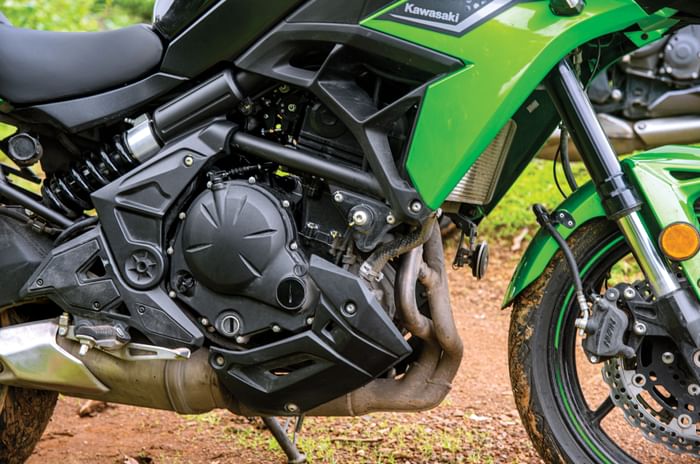
Kawasaki’s mill is relaxed and smooth at high speeds.
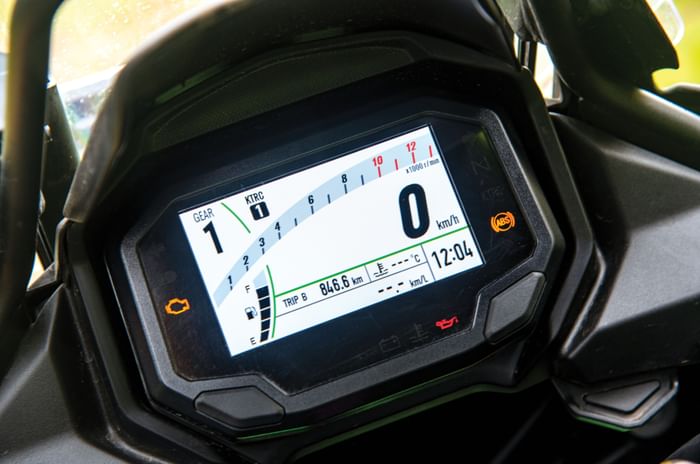
Versys’ full TFT display is larger, Bluetooth is standard
There are times when making a choice between two motorcycles is simple, as there are obvious pros and cons to each. That would make life for me quite easy, no? Except, I’m seated on a rock by the side of a lake with a huge dilemma on my plate. You see, the Kawasaki Versys 650 is a proven, middleweight, road-biased adventure touring motorcycle. It recently received a cosmetic update along with new features. But as good as it is, the new Triumph Tiger Sport 660, with its more powerful engine and sporty demeanour amongst other traits, poses a serious challenge to the Versys’ domination. Will the Japanese bike continue to reign as king of this segment, or will the British usurper grab the throne?
DIFFERENT BEATS
The ride up to our location, which was a couple hundred kilometres out of Mumbai, involved a mix of traffic-infested streets to busy highways and even a few empty patches, giving me a chance to stretch the motorcycle’s legs.
I began on the Versys, and within a few minutes of riding, I was reminded of why this Kawasaki parallel-twin engine has earned its stripes. Riding out of the city, the engine’s tractability made light work of dealing with morning traffic, as did the light clutch action and smooth gearbox. Kawasaki are also known for their excellent heat management in traffic and that’s the case with the Versys as well, ensuring my legs weren’t cooking. Soon, I was out on the open highway and this is where the engine began to come into its own. Everything from the linear power delivery, ample mid-range torque, and its relaxed nature at triple digit speeds make this engine fit for the role in a touring bike. That said, once we hit the busier section of the highway with slow moving trucks to deal with, I had to change gears constantly to maintain swift progress. Better flexibility and perhaps a more involving exhaust note would’ve been nice. With those thoughts in my head, I pulled up to Zaran who was waiting at the rendezvous point.
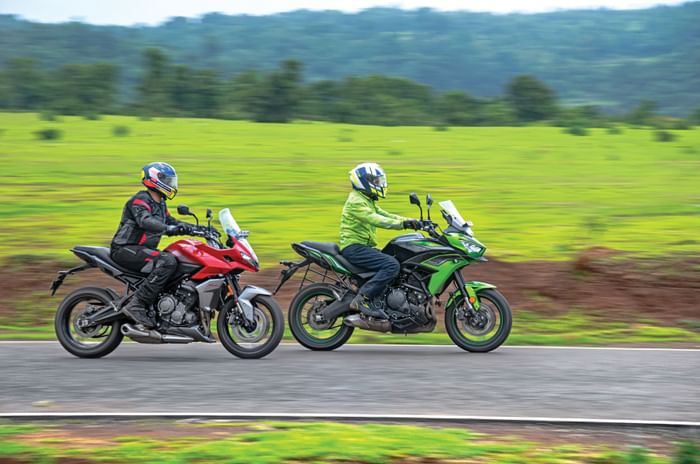
Keys exchanged, I sat myself on the Triumph and immediately liked the relatively more compact form of the bike. I have to admit, firing up its inline-triple put a huge smile on my face. It sounds vastly sportier than the Kawasaki, and, even on the move, the intake noise and scream from the underbelly exhaust excites your senses. Our test bike is equipped with the optional (Rs 26,000) up/down quickshifter, and needless to say, I was having a whale of a time on the Triumph. The engine feels peppy and responsive, and propels the bike to some serious speeds. While the Tiger felt notably quicker than the Versys, our vbox tests revealed that there’s barely a few tenths separating them in runs up to 100kph. From then on, however, the Triumph’s stronger top end ensures it pulls a bigger gap to the Kawasaki.
Superior top-end performance and sound aside, the Tiger is also a good deal more tractable than the Versys. With the way the Tiger has been geared, evident with the large sprocket at the rear, I could slot the slick gearbox in sixth and ride at 40kph or past triple digit speeds without the need to downshift while overtaking. This type of flexibility helps reduce fatigue over the course of a long journey, where you have to regularly adjust speed, especially on highways with heavy traffic. The downside of such gearing, however, is that the Triumph sounds and feels buzzy and busier than the Kawasaki’s parallel-twin, at high speeds. This is just one of the reasons that makes the Versys a superior road tourer. The other being the way it tackles our roads.
RIDE THERAPY
The Kawasaki is equipped with superior suspension components, featuring preload and rebound adjustment at the front and a remote preload adjustment for the monoshock. But, as we noticed, even in stock settings, the Versys’ ride is incredibly plush as it gobbles potholes, undulations and the occasional crater. The Tiger, on the other hand, has a firm suspension set-up and the fact that it only gets a remote preload adjustable monoshock doesn’t help its case either. Low speed ride, as a result, isn’t as absorbent as the Versys, but carrying a quicker pace does improve the ride.
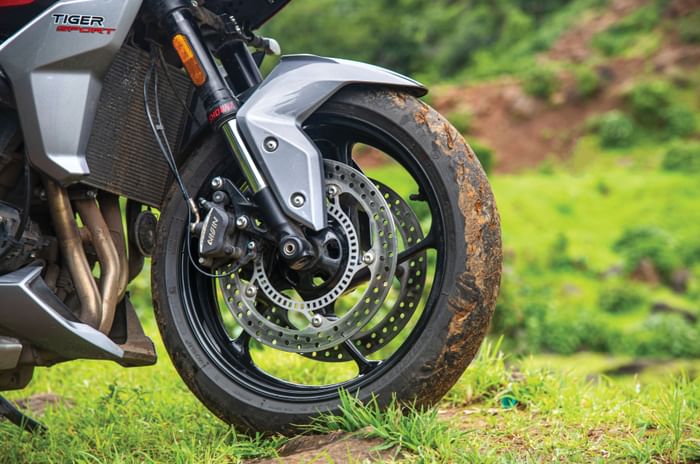
In fact, I’d happily accept the Tiger’s firmer ride as a trade-off for superior handling, for it’s the motorcycle that’ll make the corner carver happy. Riding the bike through some tight and twisty roads that we’d never been on, the Triumph’s communicative and composed chassis boosted our confidence. I also loved its sharper steering geometry and agility through chicanes. And then, there’s the Michelin Road 5 hoops, which, even on a wet surface, adds an extra layer of confidence.
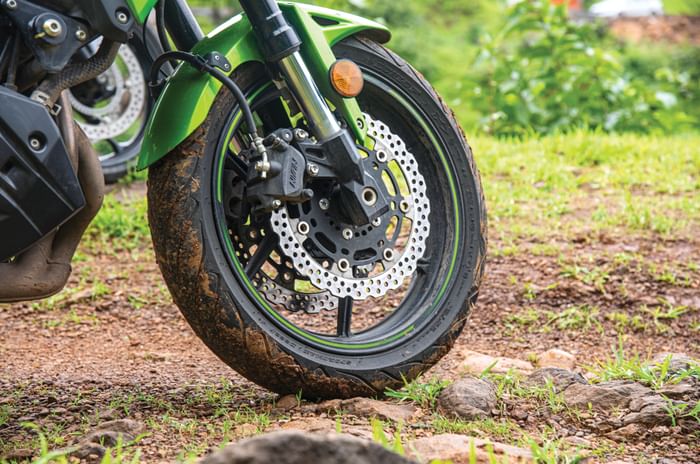
The Kawasaki, in comparison, is planted through a corner, but felt slower to turn in. Also, you can feel its heft and top heaviness during quick direction changes, especially if the 21-litre fuel tank is brimmed. The Dunlop tyres too, aren’t as good as the Michelin, and this is felt to a greater extent in the wet.
Speaking of riding in the wet, both motorcycles are equipped with switchable traction control systems to keep everything in check. The Tiger also gets a dedicated Rain mode in addition to the Road mode. During our time with these bikes, the traction control systems on both bikes were handy while dealing with some low grip surfaces. That said, it was the Kawasaki’s system that worked more transparently in comparison to the Triumph’s over-intrusive nanny. Experienced riders would, in fact, probably want to turn the system off completely, which defeats its purpose.
When it comes to braking, the Kawasaki’s stronger initial bite and feedback from the lever provides that extra confidence in comparison to the Tiger’s brakes that require a firmer pull at the lever.
GETTING PERSONAL
Choosing between two motorcycles on the basis of design is always going to be a personal choice. On one end, the Versys’ sharp, new face looks good, especially when viewed head on. It also adds more bulk to the design, so those looking for a bike with better road presence will appreciate this.
But as was the case with the previous bike, the Kawasaki’s design appears disproportionate, especially with the 17-inch wheels that look small in comparison to the rest of the body work. It’s as if a body builder skipped leg day! On the other hand, the Triumph has a nicer, sportier and proportionate design. It doesn’t have the road presence of the Kawasaki, but it is hands down the better-looking bike.
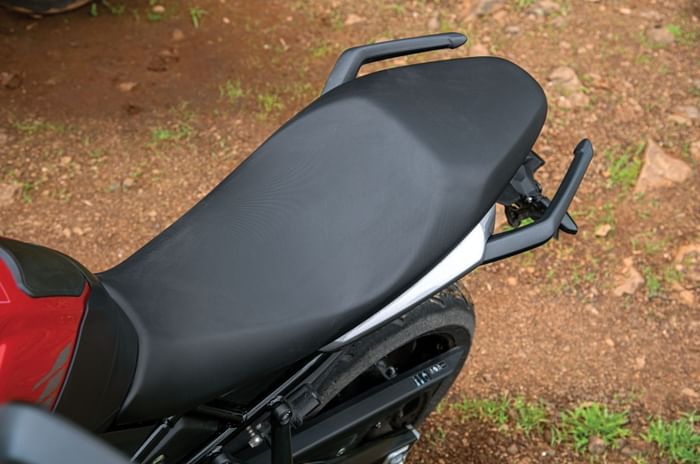
And as far as build quality is concerned, we didn’t find any major issues with either motorcycle. Except, the Triumph’s windscreen that rattled over bad roads, and its adjustment mechanism that can get jammed with dust and dirt. The Kawasaki’s windscreen has a much easier adjustment mechanism and it also offers better wind protection.
.jpg?w=700&c=0)
These motorcycles are designed to chew miles, and over the course of a day, both motorcycles turned out to be quite comfortable. The Versys has the more upright riding posture and neutral foot peg position. However, the seat is too soft and the foam sinks after a couple of hours of riding. The Triumph’s longer and firmer seat is better at offering more support and comfort over a similar time in the saddle. While you have to lean a little to reach the handlebar, and the pegs are comparatively rearset, it isn’t an uncomfortable riding position, but it’s certainly not as ergonomically comfortable or spacious as the Versys. And that applies when you’re carrying a pillion around as well.
AT YOUR SERVICE
One big aspect about owning a multi-cylinder motorcycle is ownership costs, especially if you are going to ride these motorcycles for the touring purpose that they were built for. A quick assessment of the service schedules and prices reveals that the Kawasaki requires a service every six months, while the Tiger needs to be serviced only once a year. The costs at each service ranges between Rs 6,000-8,000 for the Kawasaki, and while the Triumph’s annual service is slightly higher, it is obvious that the Japanese motorcycle will cost more money to run over the years.
GAME OF THRONES
Choosing between these two motorcycles boils down to listening to either your heart or mind. To my heart, the Tiger appeals the most, mainly because of its sporty handling, peppy engine and the design. But this is a comparison of two road-biased adventure touring motorcycles and the Kawasaki is the one that delivers.
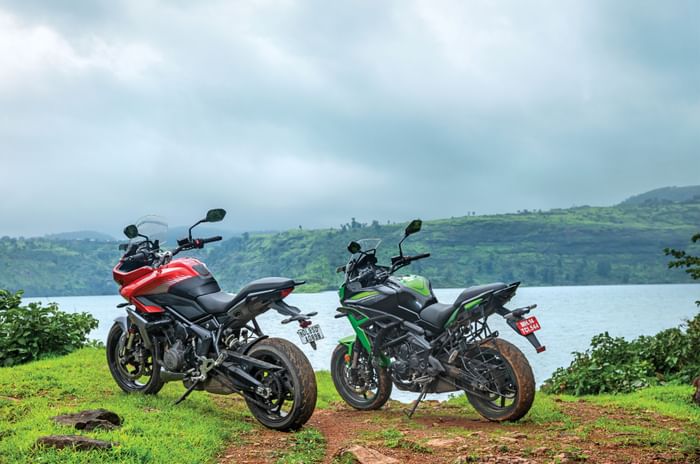
Not only is it much comfier and with a more mile-munching-oriented engine, it isn’t far behind when it comes to performance or handling either. The icing on top is its Rs 7.36 lakh price tag, which is significantly lower than the Rs 8.95 lakh that the Triumph demands or the Rs 9.08 lakh for the Red colourway. Not to mention, the Tiger sits uncomfortably close to the Triumph Street Triple R, a much more powerful street naked with fully adjustable suspension. So, as great as the Tiger Sport 660 may be, its price tag is its Achilles’ heel and hard to justify. Which leaves the Kawasaki Versys 650, the king of the segment, seated firmly on its throne.

Copyright (c) Autocar India. All rights reserved.





Comments
Member Login
Personal Details
No comments yet. Be the first to comment.